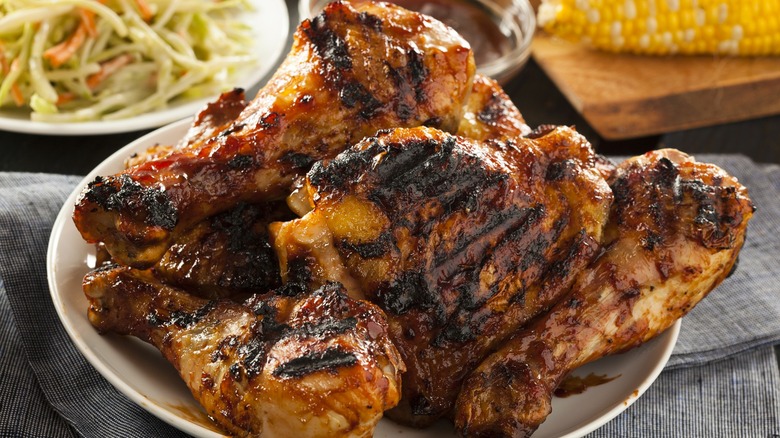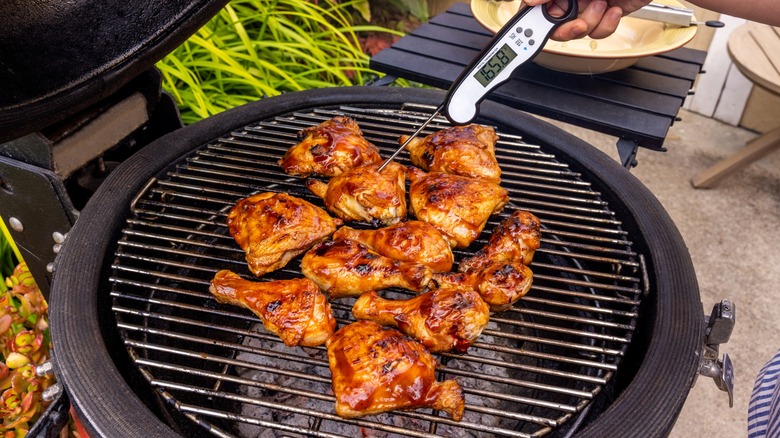The Trick To Keeping Your BBQ Chicken Juicy On The Grill
We may receive a commission on purchases made from links.
Barbecue chicken is the unsung hero of the grill, often cast aside for more illustrious meats like steak. It's understandable, as beef tends to be a bit more forgiving if your timing isn't just right. The difference between a medium and mid-rare steak is a matter of preference that many folks will adapt to. But undercooked poultry is inedible, and when it's overcooked, choking down the dried-out meat is a chore. Yet, according to the owner of The Grillin' Fools, Scott Thomas, you can enjoy juicy, fully cooked barbecue chicken simply by adjusting the heat.
The trick lies in restraining yourself from cranking up the heat across the entire grill. "Hot side to roast the chicken and cool-ish side to keep it warm without overcooking it," Thomas said. "This is called two-zone or indirect grilling." The best part is that no matter which side of the charcoal versus gas grilling debate you land on, a two-zone system is easy to achieve on both. Thomas noted, "For gas, medium to medium high heat on one side, low heat or off on the other side."
If you take Bobby Flay's stance on using a charcoal grill, the method for creating two-zone heat is just as simple. "For charcoal, bank the coals to one side and have no coals on the other side," Thomas explained. "That far end of the cool side allows for the chicken that is done to stay warm, but not continue to cook much, while other pieces of chicken are still cooking over the hot side." If you plan to slather on a little extra flavor, keep barbecue sauce from sticking to your grill by adding it as your chicken finishes cooking on the cooler side of your cooking surface.
BBQ chicken has a small window to be juicy
According to Scott Thomas, creating a two-zone heat system is essential for barbecue chicken, especially when grilling multiple pieces. "Without it, you really need to time it all to be done at the exact same time," he said. "Nobody needs that kind of stress in their lives."
Using indirect heat to finish the meat also affords you plenty of time to monitor the internal temperature, which is crucial if you want to find that sweet spot where the chicken is fully cooked, but still moist inside. "As a general rule, 165 degrees Fahrenheit is the target internal temp, but that is more for chicken breast, which has a very narrow window for being done before drying out," Thomas said. "Dark meat (legs, thighs, and wings) can go higher — 165 to 180 degrees Fahrenheit before drying out."
Thomas also warns against eyeballing the doneness of your meat. "Use a probe thermometer to get chicken to the right temp," he advised. "There is nothing worse than guessing that the chicken is done because it 'looks done' only to have a guest bite into an undercooked piece of chicken." A digital thermometer like the ThermoPro Digital Meat Thermometer is an indispensable tool that no self-professed grilling pro should be without — especially when it comes to cooking a dish that can go from underdone to overcooked as quickly as barbecue chicken.

